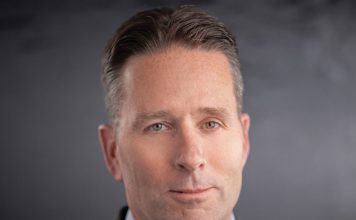In the wake of fresh-hot legislation that sunsets ultra-violet indoor tanning for minors, teens wanting a golden glow to complement their prom digs will have to settle for tinted lotions, darkening sprays or Mother Nature’s fickle whims – the latter of which has one local spa owner concerned.
“The legislation kind of ignored the fact that taking away the option for teens to tan indoors won’t stop them from sun tanning. It will only send them outdoors into an uncontrolled environment. No supervision, no trained staff, no parental consent required,” said Christie Mendonca, co-owner and marketing manager of the Australian Tanning Company, which has two of its seven branches rooted in Gilroy and Morgan Hill.
“Outside, (teens) are more likely to be overexposed or sunburned,” she said Monday. “And that’s exactly what proponents of this bill say they’re trying to avoid.”
Senate Bill 746 was signed Sunday by Gov. Jerry Brown, making California the first state to make it illegal for teenagers 18 and under to develop that sun-kissed look by cocooning themselves in a tanning bed. Texas has the next highest age limit, banning tanning bed use by teenagers under 16.
Current law allows minors between the ages 15 and 17 to use a UV tanning device if they have written permission from their parents, but SB 746’s author Sen. Ted Lieu (D-Torrance) said his bill will protect youths from adverse health risks, such as melanoma.
“If everyone knew the true dangers of tanning beds, they’d be shocked,” states an Oct. 9 press release posted on Lieu’s website. “Research shows those who use tanning beds before age 35 increase their lifetime risk of melanoma by 75 percent.”
The legislation – which goes into effect Jan. 1, 2012 – is backed by healthcare groups including the American Cancer Society, the California Medical Association and the AIM at Melanoma Foundation.
According to Stephen Sesody, D.O., a Physician Dermatologist with Kaiser Permanente in Gilroy, “it’s pretty clear that no dermatologist would recommend going to the tanning beds.”
Sun waves, he explains, break down into two different wavelengths: Ultraviolet-A (UV-A) and Ultraviolet-B (UV-B). He said UV-A contributes to skin cancers and the aging of the skin (causing wrinkles, dark spots, etc.) while UV-B – the shorter wavelength – causes sunburns.
Both are carcinogenic, but UV-A penetrates the skin deeper, “and that’s what’s delivered in those tanning beds,” said Sesody.
In terms of sunburns, UV-A isn’t necessarily worse, “but it’s a cumulative effect, and it also penetrates the skin deeper than UV-B,” he explained.
While humans are exposed to UV-A in natural light, Sesody said getting into a tanning bed – on top of normal sun exposure – ultimately increases the risk for UV-A radiation.
“It’s analogous to smoking one cigarette, versus several,” he said. “It’s all contributory.”
Mendonca, on the other hand, views the new bill as counter-productive. With tanning beds off-limits, “there’s this thing called the sun that every teenager is going to pop out and lay in,” she reasoned.
She isn’t worried about the new age restriction hindering customer flow, however, as only a “very small percentage” of her patrons are under 18.
This reflects the estimate released by the Indoor Tanning Association, which states teens under 18 make up 5 to 10 percent of tanning bed regulars nationally.
For those under 18, Mendonca highlights alternative UV-free solutions such as airbrushing, spray tanning and self-tanners that don’t streak, stain or smell.
The Australian Tanning Company is also offering a special spray booth rate for 18-and-under patrons, she added.
The Indoor Tanning Association highlights a “well-known” side effect of exposing the skin to UV light – the production of vitamin D – which “plays an important role in maintaining good health.”
“Everything in moderation is the key,” said Mendonca, who wears sunscreen every day. “When you’re going into a tanning bed, you’re getting a controlled base, so when you go out into the sun, you’re less likely to burn.”
The association also insinuated a relationship between the bill’s backers and the sunscreen industry, which the ITA said is more focused on “dollars than science.”
While the Australian Tanning Company isn’t distraught over potential revenue loss, Mendonca is alarmed for salon owners across California “who are worried about it,” she said.
According to the ITA, the recession hit their industry hard, causing 25 percent of professional indoor tanning salons in California to close since 2009. The new age restriction, it argues, “will only push more over the edge.”
When it comes to honing in on the population that will be directly affected by SB 746, mass reaction isn’t easy to deduce – but, like a sunburn that subsides in a few days, Aromas teenager Brianna O’Bannon, 17, said she’ll get over it.
“I think it’s fair and unfair. I know all the risks about it. I think it’s logical to be illegal for minors,” said the Anzar High School student who used to tan once a week at Tanner’s Cove in Watsonville, which O’Bannon said is frequented by numerous male and female teens. “I think it’s unfair in a sense that, just because if people want to do something they’re going to be upset if it’s illegal for them to do it.”
Jonahluis Galvez, 16, a junior and student representative for Gilroy High School who wasn’t aware Gilroy even had a tanning salon, didn’t seemed phased by the news.
None of her friends go tanning, she said.
Rather, her first inclination is that indoor tanning is more common with the adult population; specifically, college students.
“I don’t think anyone I know is interested in tanning,” she said. “Anything unnatural like that, I honestly don’t think children under 18 should be exposed to that.”













